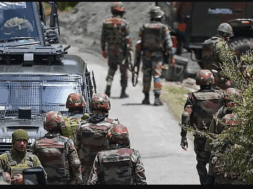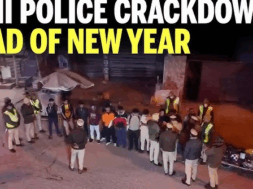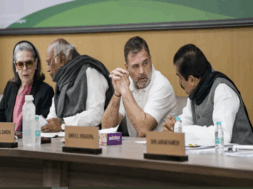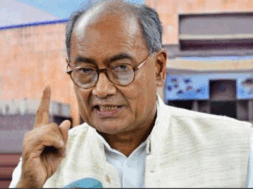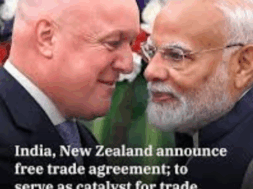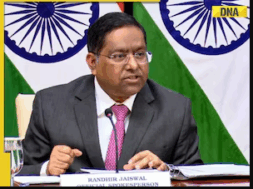
Pompeo, Esper Arrive in Delhi for Talks on Defence and Foreign Affairs, China May Figure Prominently
Manas Dasgupta
NEW DELHI, Oct 26: Amidst China massively ramping up its military infrastructure along the entire stretch of the Line of Actual Control, the United States Secretary of State Mike Pompeo and Defence Secretary Mark T Esper arrived in Delhi on Monday for the third edition of the 2+2 ministerial dialogue.
The US-India dialogue on Tuesday between Pompeo and Esper’s Indian counterparts, the external affairs minister S Jaishankar and the defence minister Rajnath Singh, are expected to cover the entire expanse of defence and security as well as key regional and global issues focusing on further boosting bilateral defence and security ties and cooperation in the Indo-Pacific region. China is certain to figure prominently during the talks.
The two key officials of the Trump administration are also scheduled to meet Prime minister Narendra Modi and National Security Adviser Ajit Doval.
The massive deployment and the renewed focus on infrastructure upgrade by China in addition to the army stand-off points in Ladakh has prompted Indian officials to suspect that the move might not be limited only to ward off Indian response to the Chinese aggressive steps but might be intended towards rapid militarisation of the Buddhist Tibet.
“We would ordinarily have expected the mobilisation and the focus of the infra upgrade to be limited to the stand-off points, mostly aimed at warding off any armed threat from India to occupied Aksai Chin. But this is not the case,” a top national security planner said. “There has been a clear effort to militarise the autonomous region through infrastructure upgrade”.
The official cited recent satellite imagery of the Tibet region that shows shelters to house fighter jets in an excavated hill at Gonggar airbase in Lhasa, massive storage facility at Golmud in Qinghai province, a new road between Xinjiang region’s Kanxiwar, used as forward deployment base during 1962 war, to the Hotan airbase and border upgrade at Nyangulu and Nyingchi across Arunachal Pradesh. Nyangulu, 60 kilometres from the Arunachal border, was again used as a forward PLA camp in the 1962 war.
In the last few months, the US has been ramping up attacks on China over a range of contentious issues including the border standoff with India, its military assertiveness in the South China Sea and the way Beijing handled the anti-government protests in Hong Kong.
Last week the External Affairs Ministry Spokesperson Anurag Srivastava had said the Indo-US talks would entail a comprehensive discussion on bilateral issues as well as deliberations on regional and global development.
It is expected that the two sides may finalise the long-pending “Basic Exchange and Cooperation Agreement” (BECA agreement) to further boost bilateral defence ties. The BECA will provide for sharing of high-end military technology, logistics and geospatial maps between the two countries.
The Indo-US defence ties have been on an upswing in the last few years.
In June 2016, the US had designated India a “Major Defence Partner” intending to elevate defence trade and technology sharing to a level commensurate with that of its closest allies and partners.
The two countries inked the Logistics Exchange Memorandum of Agreement (LEMOA) in 2016 that allows their militaries use each other’s bases for repair and replenishment of supplies as well as provide for deeper cooperation.
The two countries signed another pact called COMCASA (Communications Compatibility and Security Agreement) in 2018 that provides for interoperability between the two militaries and provides for sale of high end technology from the US to India.
According to the US government, India maintains the largest fleet of C-17 and P-8 aircraft outside of the US, and as of 2020, Washington has authorised more than USD 20 billion in defence sales to India
The first edition of the 2-plus-2 dialogue was held in Delhi in September 2018 after the mechanism was approved by Prime Minister Narendra Modi and President Donald Trump.
The second edition of the dialogue took place in Washington in December last year.
The new framework of the ministerial dialogue was initiated in order to provide a forward-looking vision for the strategic partnership between the two countries.
China’s aggressive posture against Tibet has heightened with the US appointing Robert A Destro, Assistant Secretary of State for the Bureau of Democracy, Human Rights and Labor as the new special coordinator for Tibet issue on October 14 after a hiatus of four years. Tasked with a mandate of promoting dialogue between the People’s Republic of China and the 14th Dalai Lama to protect the unique religious, cultural and linguistic identity of Tibetans, Destro met Lobsang Sangay, head of Tibetan government-in-exile, a day later in Washington. This was the first time that a US State Department official met the leader of the Tibetan government-in-exile in six decades.
While China has fiercely opposed the appointment of a US coordinator on Tibetan affairs, intelligence reports confirm that for Tibetan Buddhist the 14th Dalai Lama is still considered a living god with his pictures being displayed prominently in houses in the outskirts of Lhasa. Beijing calls the Dalai Lama, who is treated by India as an “honoured guest” and a spiritual leader, a “splittist and a terrorist.”
China is already preparing for the succession of the temporal leader of Tibetans so that the Communist Party can control Buddhist culture while the PLA builds a military wall on the border with India. In support of the claim the official sources pointed out that the Chinese president Xi Jinping speaking at Communist Party Symposium on Tibet Work on August 20 had directed the party leaders to solidify border defences, ensure frontier security in Tibet and plant “the seeds of loving China in the depths of the heart of every (Tibetan) youth.”


